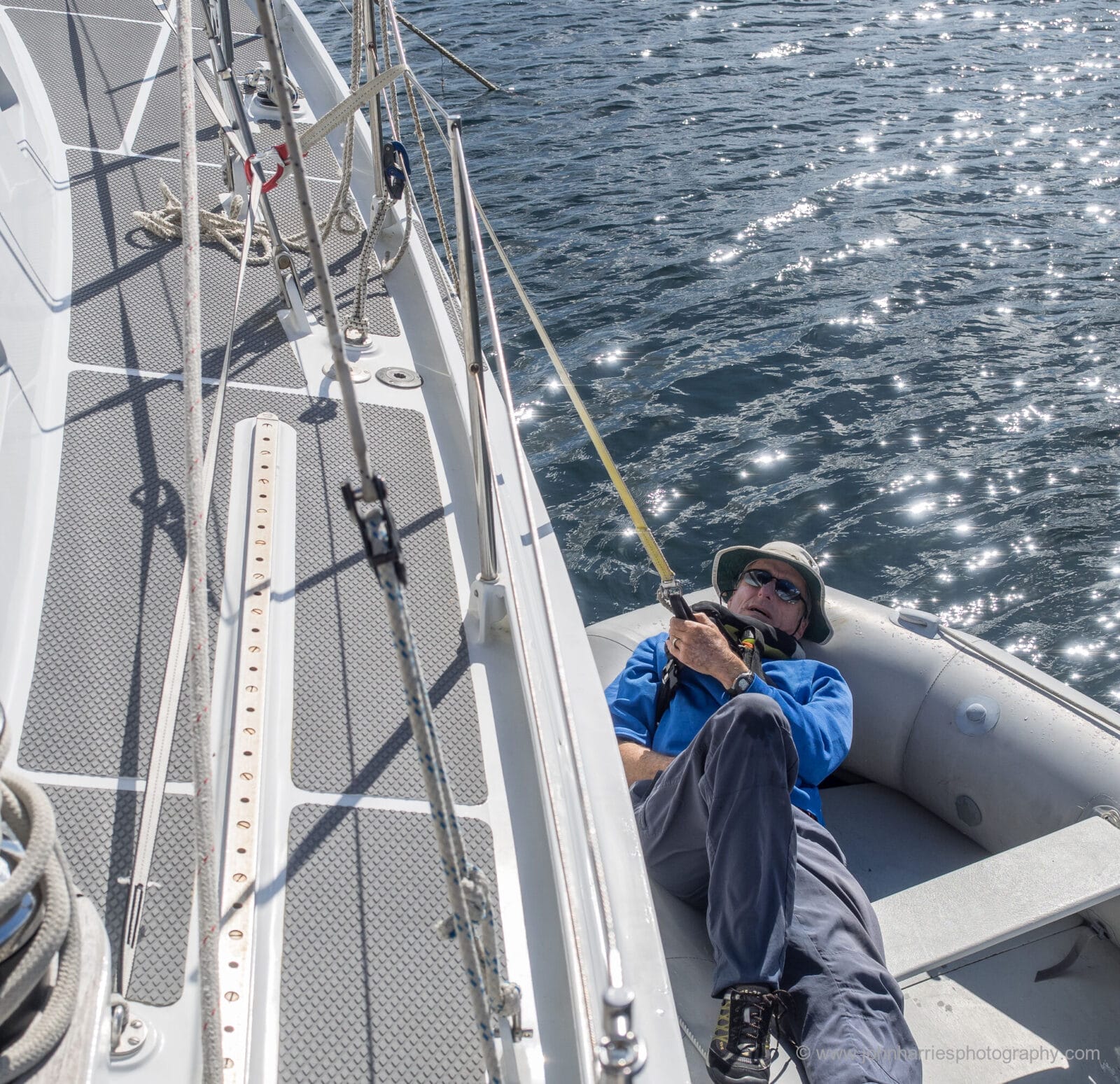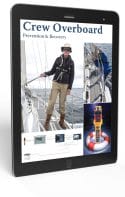
Ten years ago I wrote two chapters investigating how dangerous the jackline systems I had relied on for over 40 years of offshore sailing actually were.
But even so, the vast majority of offshore boats I see are still using sub-optimal jackline systems.
That’s the bad news. The good news is that we now have even better engineering to help us analyze the risks so that each of us can decide what changes to make, if any.
Here’s my updated views on several currently used systems based in large part on that improved data.
The better news is that I managed to condense what had been two long chapters into one short…ish one.
If you have not read the last chapter, please do so now, since much of what follows is based on it.


Given all the above, there must be a discussion to be had about whether any lifelines that leave any possibility of going over the side are worth the risk. On the one side you have the real risk that the COB will never be seen again if not using a lifeline. On the other side there are the risks discussed above of drowning (v quickly), internal injuries. Both sets of risks are real.
The balance of those risk will alter according to conditions.Mid-ocean at night with a big sea – I’ll take almost any risk to stay attached to the boat. Dealing with a spinnaker on a summer’s day close to shore and other boats – I’ll take the swim option because of I went over the side I could be dead before the crew noticed I wasn’t on deck if I was attached by a tether
Hi Robert,
Very much the way I think about it too, particularly if on a fast boat where the shock tension of going over the side can probably maim, or even kill us, so how long we are dragged or how fast we are dragged back aboard might become academic.
Of course by far the best solution is being clipped on to a system that acceptably reduces the chances of being dragged in the first place, as detailed in the rest of this Online Book, but then we have to balance that against mobility. On the M&R 56 mobility was not a problem so we were clipped on no matter what we were doing. On a smaller boat that gets more difficult. More coming on that trade off.
Way too technical. Don’t need all the mathematics. The only system that works, especially for solo, is to have the tether/jack line length so that you don’t go overboard at all.
Hi Randolph,
Sure, that’s the best bet, but given that a good 90% of the boats I see out there still have systems that will allow dragging it seems to me a good use of my time to really dig into the dangers, and to do that we have to understand the math. For example, without the math there is no way to understand why low stretch jackline materials are a bad idea. Ditto highlines.
Math is the language that explains the world, without it we are just guessing, and are often fooled.
Hi
I have shoulder high lifelines as proposed by Mahina Tiara. I only use them as one more safety to make sure I don’t fall overboard. I don’t clip myself or tethers to them.
Hi Charles,
Sure, that’s an option, particularly if you are clipped to a jackline that’s well inboard so you can’t drag.
With all respect due, but math and engineering are what make a yacht sing. Upon design, 100s of question are asked and the answer comes from the engineer on the basis of calculations and a recommendation is issued with a stamp. If you don’t need the math, because you are lucky enough to arrive at a workable zero-drag situation then great for you. We aspire to the same, we’ll see how successfully so. For others it is very hard to completely eliminate enough of the likelihood.
Thanks for the update. Dense read but very much worthwhile. This is really good, honest work – you struggle through an unappetising topic rather than just implementing “standards” well knowing that they won’t work.
it seems to me that the story does emerge nicely , despite the inherent gaps.
One of this Summer’s joys will be taking out the TIG torch and pit the attachment points exactly where they are most useful
Hi George,
I think that’s a good assessment.
Hi Again George,
Sorry, I forgot to say thanks for the kind words. Struggle is right! Who would have thought that what started as a short article about the TeamO would lead to all this.
Hi John,
Very good points you make in there.
Ever thought or recommended the installation of netting in order to avoid having that gap between the deck and the lifeline? I mean, in order to avoid going down in between the deck and the top of the lifeline? I always thought only people with toddlers or dogs had those, but we’ve met some cruisers that had installed net for safety reasons or had kids and saw the following added benefit. If they were to fall and slip they would be stopped by the netting. It also helped jerrycans and other stuff stay on deck as well (I consider those a hazard on deck, but some people don’t exactly have a choice if they go long distances). Netting is also very ugly. But should we refrain from examining a safety question for the looks of the vessel? I think not.
We have a step of like 6-8 inches, never measured it, between the deck and the top of the stainless steel toe rail on our boat, which make it feel a bit more protected and us less likely to fall between the deck and the lifeline. It’s making it even more likely that we should fall from our boat and officially go COB, it would be over the lifeline. I see this as further shortening the length of our tether outside of the vessel, if any, depending where we are on our non traditional side deck jackline. It would mean our tethering line goes from the tethering point from deck height to top of the lifeline, which in our case is a solid stainless steel hand rail all around at a height of 36 inches from the deck, back down with gravity hopefully over water, not in it. That works only if our tether are short enough and our side deck attachment point tightened enough and we don’t fall in between the deck and the lifeline, hence my question about the netting. Netting is not realistic on our boat because of the many lines and our general genoa and parasailor set up. Perhaps it is in some area of the bow.
Still, for the people on whose boat it could make sense, do you think it could be an extra layer of protection in term of COB scenario that you would recommend? My general idea stems from the fact if you necessarily fall over the lifeline as opposed to between the deck and the lifeline because that’s no longer a possibility because of the net, if the tether point is at deck height, you necessary hang from a higher point and are not allowed to go as low as a result. How strong are most stanchions and lifeline anyways? They look absurdly frail on most boat.
Maybe you talk about this in another article or have given it some thought. I’m curious to pick your brain.
Best,
Marie
Hi Marie,
I’m not really a fan of netting for the reasons you list so my approach is to tackle the problem at source by modifying the jackline system by moving it inboard so that we can will not go over, or under, the rail when tethered. So doing also solves the worry of the lifelines and stanchions not being strong enough to take the loads of a fall over them, particularly important given that I think most are not strong enough to withstand that with deformation or failure. Read on in this online book for how.
Yes, tackle at the source is the way to go! no netting on my boat soon!